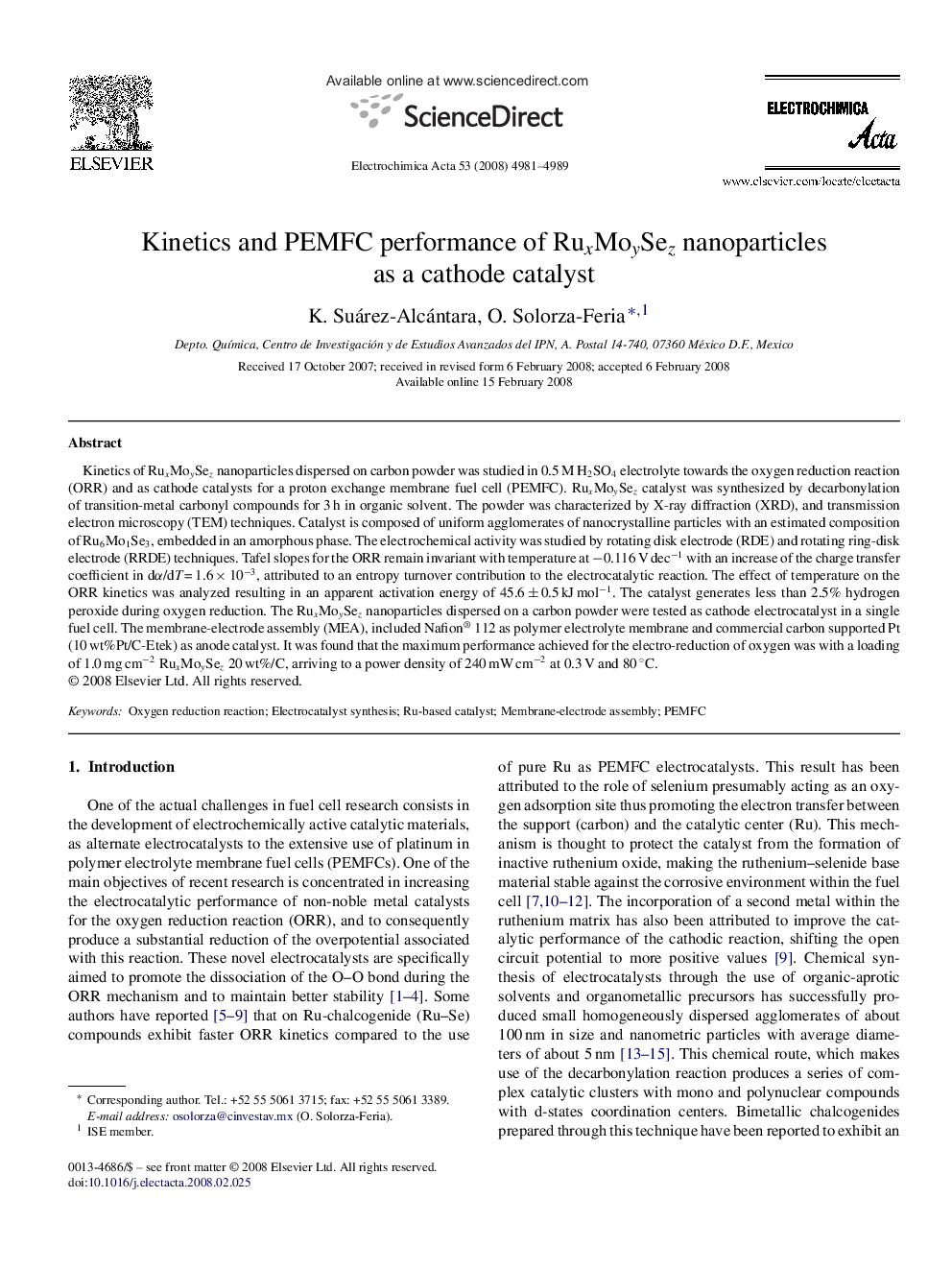| Article ID | Journal | Published Year | Pages | File Type |
|---|---|---|---|---|
| 192651 | Electrochimica Acta | 2008 | 9 Pages |
Kinetics of RuxMoySez nanoparticles dispersed on carbon powder was studied in 0.5 M H2SO4 electrolyte towards the oxygen reduction reaction (ORR) and as cathode catalysts for a proton exchange membrane fuel cell (PEMFC). RuxMoySez catalyst was synthesized by decarbonylation of transition-metal carbonyl compounds for 3 h in organic solvent. The powder was characterized by X-ray diffraction (XRD), and transmission electron microscopy (TEM) techniques. Catalyst is composed of uniform agglomerates of nanocrystalline particles with an estimated composition of Ru6Mo1Se3, embedded in an amorphous phase. The electrochemical activity was studied by rotating disk electrode (RDE) and rotating ring-disk electrode (RRDE) techniques. Tafel slopes for the ORR remain invariant with temperature at −0.116 V dec−1 with an increase of the charge transfer coefficient in dα/dT = 1.6 × 10−3, attributed to an entropy turnover contribution to the electrocatalytic reaction. The effect of temperature on the ORR kinetics was analyzed resulting in an apparent activation energy of 45.6 ± 0.5 kJ mol−1. The catalyst generates less than 2.5% hydrogen peroxide during oxygen reduction. The RuxMoySez nanoparticles dispersed on a carbon powder were tested as cathode electrocatalyst in a single fuel cell. The membrane-electrode assembly (MEA), included Nafion® 112 as polymer electrolyte membrane and commercial carbon supported Pt (10 wt%Pt/C-Etek) as anode catalyst. It was found that the maximum performance achieved for the electro-reduction of oxygen was with a loading of 1.0 mg cm−2 RuxMoySez 20 wt%/C, arriving to a power density of 240 mW cm−2 at 0.3 V and 80 °C.
